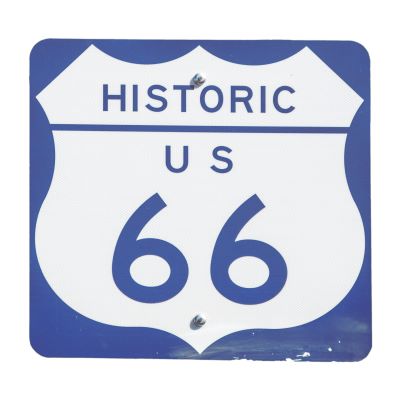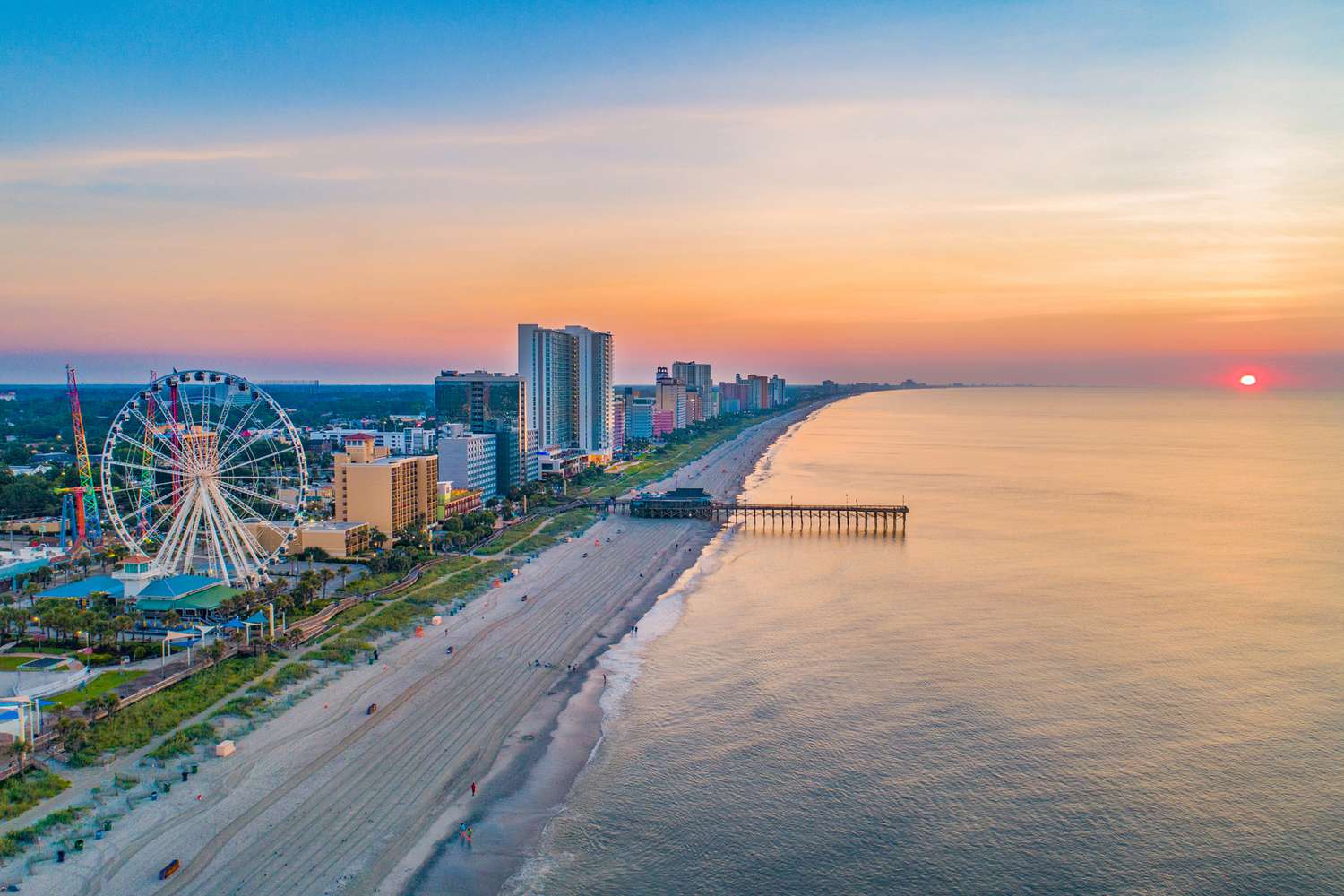
A Journey Through History, Route 66

Route 66, also known as the Main Street of America, was established in 1926 as one of the original highways in the U.S. highway system. The idea for Route 66 was born out of the need for a more direct and efficient route from Chicago to Los Angeles. Prior to the establishment of Route 66, travelers had to navigate a series of smaller, less reliable roads to make the journey. The creation of Route 66 was a significant development in the history of American transportation, as it provided a more direct and accessible route for travelers and goods.
The construction of Route 66 was a massive undertaking that required the cooperation of several states and local governments. The highway stretched over 2,400 miles, connecting Illinois, Missouri, Kansas, Oklahoma, Texas, New Mexico, Arizona, and California. The construction of Route 66 provided a much-needed economic boost to the communities along its path, as it created jobs and opportunities for local businesses. The completion of Route 66 in 1938 marked a new era in American travel, as it provided a more efficient and accessible route for travelers and goods between the Midwest and the West Coast.
The Rise of Route 66 as a Major Highway:
After its completion, Route 66 quickly gained popularity as a major highway for travelers and goods. The highway became a vital link between the agricultural and industrial centers of the Midwest and the markets of the West Coast. Route 66 also played a significant role in the development of the American automobile industry, as it provided a direct route for the transportation of vehicles from manufacturing plants to dealerships across the country. The rise of Route 66 as a major highway had a profound impact on American culture and commerce, as it facilitated the movement of people and goods across the country.
The popularity of Route 66 as a major highway also led to the development of roadside businesses and attractions along its path. Motels, diners, gas stations, and other businesses sprang up along Route 66 to cater to the needs of travelers. These businesses became an integral part of the Route 66 experience, offering travelers a place to rest, refuel, and enjoy a meal during their journey. The rise of Route 66 as a major highway not only transformed the way Americans traveled but also contributed to the growth of small businesses and communities along its path.
Route 66 During the Great Depression:
The Great Depression had a significant impact on Route 66 and the communities along its path. As the economy faltered, many Americans were forced to hit the road in search of work and opportunity. Route 66 became known as the "Mother Road" during this time, as it provided a lifeline for those seeking a better life in the West. However, the influx of migrants and travelers also put a strain on the resources and infrastructure of the communities along Route 66. Many businesses struggled to stay afloat during this time, as the economic downturn took its toll on the roadside economy.
Despite the challenges brought on by the Great Depression, Route 66 continued to serve as a vital lifeline for those seeking opportunity in the West. The highway became a symbol of hope and resilience for many Americans during this difficult time, as it provided a path to a better future. The struggles faced by those who traveled Route 66 during the Great Depression are immortalized in John Steinbeck's novel "The Grapes of Wrath," which tells the story of a family's journey along Route 66 in search of a better life. The Great Depression had a profound impact on Route 66 and its legacy, shaping its identity as a symbol of hope and perseverance in the face of adversity.
Route 66 in Popular Culture:
Route 66 has played a significant role in American popular culture, serving as a symbol of freedom, adventure, and the open road. The highway has been immortalized in literature, music, film, and television, capturing the imagination of generations of Americans. In literature, Route 66 has been the subject of numerous novels and works of non-fiction that explore its history and significance in American culture. Musicians have also been inspired by Route 66, with the iconic song "Route 66" by Bobby Troup becoming an anthem for travelers and adventurers alike.
In film and television, Route 66 has been featured in numerous productions that showcase its unique charm and allure. The highway has been the backdrop for classic films such as "The Grapes of Wrath" and "Easy Rider," which depict the struggles and adventures of those who traveled its path. In television, Route 66 was the inspiration for a popular series that aired in the early 1960s, following two young men as they traveled across America in a Corvette convertible. The enduring popularity of Route 66 in popular culture has cemented its status as an iconic symbol of American freedom and adventure.
The Decline of Route 66:
Despite its popularity and significance in American culture, Route 66 began to decline in the mid-20th century due to changes in transportation infrastructure. The construction of the Interstate Highway System in the 1950s and 1960s led to the bypassing of many sections of Route 66, as newer, more efficient highways were built to accommodate increasing traffic volumes. As a result, many businesses along Route 66 suffered from declining patronage, leading to closures and economic hardship for communities along its path.
The decline of Route 66 had a profound impact on the communities that had relied on its traffic for economic stability. Many businesses were forced to close their doors, leaving behind abandoned buildings and landmarks that once thrived on the bustling highway. The decline of Route 66 also had an impact on American popular culture, as it marked the end of an era for the iconic highway that had captured the imagination of generations. Despite its decline, Route 66 continued to hold a special place in the hearts of many Americans, who sought to preserve its legacy for future generations.
The Revival of Route 66:
In recent decades, there has been a renewed interest in preserving and celebrating the legacy of Route 66. Efforts to revitalize the highway have led to the restoration of historic landmarks and businesses along its path, as well as the creation of museums and attractions dedicated to its history. The revival of Route 66 has sparked a renewed interest in exploring its unique charm and allure, attracting travelers from around the world who seek to experience its iconic landmarks and roadside attractions.
The revival of Route 66 has also led to an increase in tourism and economic development for communities along its path. Many towns and cities have embraced their connection to Route 66, hosting festivals, events, and attractions that celebrate its history and significance in American culture. The preservation and revitalization of Route 66 have become a labor of love for many individuals and organizations who seek to ensure that its legacy endures for future generations. The revival of Route 66 has breathed new life into the iconic highway, ensuring that its unique charm and allure continue to captivate travelers from around the world.
Route 66 Today:
Today, Route 66 continues to hold a special place in American culture as an iconic symbol of freedom, adventure, and the open road. While many sections of the highway have been bypassed by newer highways, there is still a strong interest in preserving its legacy for future generations. Travelers from around the world continue to seek out Route 66 to experience its unique charm and explore its historic landmarks and attractions.
Many communities along Route 66 have embraced their connection to the highway, hosting events and attractions that celebrate its history and significance in American culture. Museums dedicated to Route 66 have been established to preserve its legacy and educate visitors about its impact on American transportation and popular culture. Efforts to revitalize historic landmarks and businesses along its path have led to an increase in tourism and economic development for communities that rely on its traffic for stability.
In conclusion, Route 66 holds a special place in American history as an iconic symbol of freedom, adventure, and perseverance. Its legacy continues to captivate travelers from around the world who seek to experience its unique charm and explore its historic landmarks and attractions. Efforts to preserve and revitalize Route 66 have ensured that its legacy endures for future generations, ensuring that it remains an integral part of American culture for years to come.








